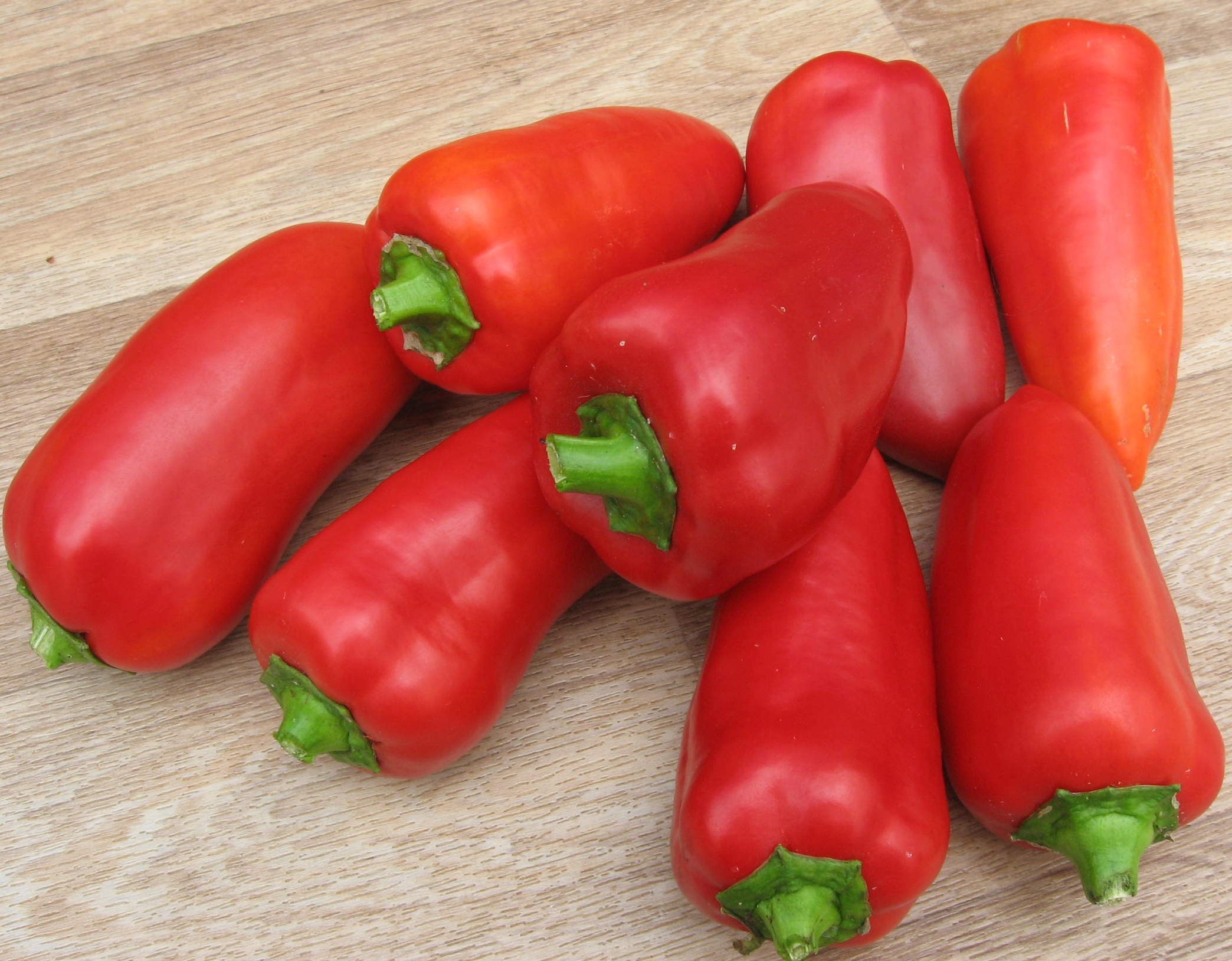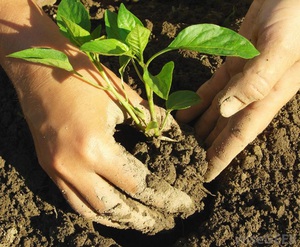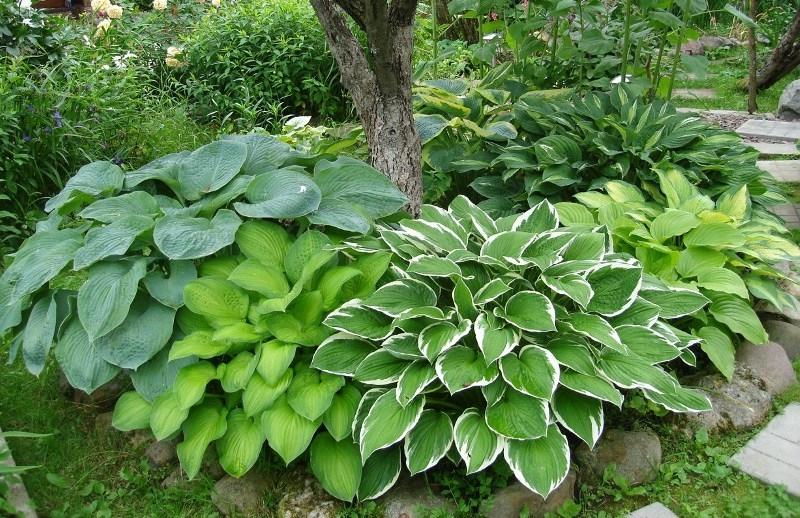Sweet or bell pepper is a thermophilic and rather capricious plant, but it also has many advantages. In addition to the bright colors of the fruits, which can easily decorate a festive dish, pepper can also boast of the presence of vitamins, which it contains a lot.
Content
Selection of pepper seeds and their sowing
To grow pepper and get a good harvest, you need to properly care for it. But, first of all, when choosing seeds of this or that variety, it is necessary focus on growing conditions... This could be:
- Open ground;
- Stationary greenhouse;
- Temporary shelter;
Growing pepper in a greenhouse is a good option in a greenhouse, he is comfortable. Although it grows well in open soil.
When the variety is selected, you can start germinating the seeds. Due to its thermophilicity, sweet peppers are grown only in seedlings. Seeds for seedlings must be processed before sowing. Their soaked for several hoursin warm water. When they are swollen, they are transferred to a damp cloth for 3 days. Such treatment helps to get seedlings very quickly.
They are also disinfected by keeping them in a manganese solution for half an hour and then rinsing them with running water. Their treatment with growth stimulants is also useful. It will be useful to prevent seedlings from fungus. For this, special means are used. Pepper seeds are sown in February so that in May they can already be transplanted into the ground. Suitable for growing seedlings:
- Coconut substrate;
- Peat tablets, they are convenient in that when picking, the seedlings, along with the tablet, are simply moved to another container;
- A hydrogel primer that retains moisture well.
But you can really cook the substrate yourself from humus, earth and sand in a ratio of 2: 1: 1... This mixture will turn out to be light and loose. For a kilogram of composition, you can add art. ash lies. Before sowing seeds, it is good to spill the soil with a manganese solution.
You can use boxes for growing seedlings. But pepper does not tolerate transplanting very well. Therefore, many people prefer growing seedlings in small pots or cups to avoid picking seedlings. Both methods are quite applicable. When the seeds are sown, they should be properly moistened and covered with glass or plastic.
How to care for seedlings
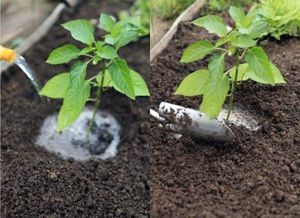 Temperature plays an important role in the care of seedlings. Optimal temperature parameters for the normal growth of seedlings:
Temperature plays an important role in the care of seedlings. Optimal temperature parameters for the normal growth of seedlings:
- Daytime t - 25-27 ° C;
- Night t - 10-15 ° C;
It is important to provide seedlings and a good drainage layer. Small pebbles or sand are suitable for this, they are added to the substrate. Moisturizing it should be moderate. Excess moisture can lead to various diseases, but drying out of the soil should also not be allowed. Water the seedlings with warm waterbecause they can die from the cold. What else is needed for the normal cultivation of seedlings:
- Provide room humidity. This can be easily achieved by spraying or purchasing a special humidifier;
- Airing is necessary, but neat so that the seedlings are protected from drafts. Therefore, it is better to cover them for this time;
- Additional lighting is also needed for maintenance. It is created using phytolamps of LED or fluorescent lamps.
First the backlight is used around the clock, but as the seedlings grow, they are supplemented only in the morning and in the evening, providing daylight hours for about 12 hours.
For growing seedlings and their development, plants begin to fertilize even in seedling containers. When 3 leaves appear on the seedlings, you can start feeding. For this, ammonium nitrate diluted in water, mixed with potassium compounds and superphosphate, is suitable. After 2 weeks, a second feeding is carried out. After fertilization, the seedlings must be watered. Of plant fertilizers for seedlings, nettle infusion is good. A mixture is prepared at the rate of 10 parts of water for 1 part of nettle, it is insisted for 2 days.
From seedling boxes 20 days after germination dive into separate pots... It is undesirable to use too large containers for picking seedlings. In them, the seedlings can rot the root or they will build up excess green mass.
Before transplanting into open soil, the seedlings are hardened. To do this, it must be taken out into fresh air, each time increasing the exposure time. The main thing here is to monitor the air temperature. For pepper, its minimum value is 13 ° C. So it gradually adapts to sunlight, wind and rain. Such procedures make the pepper more resistant to temperature extremes.
After 60 days, the seedlings are ready to be moved to the open ground or greenhouse to a permanent location. But seedlings of 80 days of age usually have higher yields. It is important that the plants have 10-12 leaves, and height about 30 cm... A day before moving to open ground or greenhouse, you can spray them with a growth stimulator solution. This also increases resistance to disease.
Preparing the soil
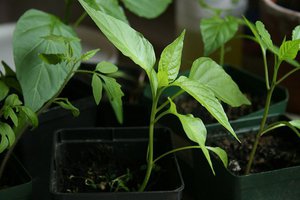 Soil for growing sweet peppers, as well as for seedlings, is light permeable, moist and fertile. The soil should be neutral acidic, if it has a high pH, it needs liming. It is useful to add rotted peat and sand to loams. Peat soil is mixed with humus and sod land. Into sandy ground make sawdust, humus.
Soil for growing sweet peppers, as well as for seedlings, is light permeable, moist and fertile. The soil should be neutral acidic, if it has a high pH, it needs liming. It is useful to add rotted peat and sand to loams. Peat soil is mixed with humus and sod land. Into sandy ground make sawdust, humus.
The soil for the pepper is prepared in advance. For about a year, it is good to add the following compositions to the garden where pepper planting is planned:
- Organic fertilizers are added directly under the pepper precursor;
- In the fall, during digging, mineral potash and phosphorus fertilizers are introduced;
- Ammonium nitrate is added to the topsoil in the spring.
After fertilizing the soil, it must be dug up, freed from weeds and leveled. Then spill with potassium humate or mullein dissolved in hot water.
A few days before planting pepper seedlings, it is good to disinfect the soil with this composition: add st. lies of copper sulfate. So, the soil is ready and you can move the sweet pepper seedlings into it.
We plant seedlings
Pepper must be transplanted carefully, without damaging its roots. Seedlings are transferred from separate containers together with a lump of earth. This method minimizes the risk of root injury. Peppers are planted in open ground when all frosts have passed in late May and early June. To a temporary greenhouse in mid-May, and to a stationary greenhouse in the beginning of May... When planting sweet peppers, one must take into account what grew in the beds before it. Well it will develop on the soil where there were:
- Pumpkin;
- Cucumbers;
- Carrot;
- Zucchini.
But after potatoes, peppers, tomatoes or eggplants, it is better not to plant peppers, finding another place for it. Must take care of soil temperature... Sweet peppers do not like cold soil, and high beds would be a good option for growing it.
It is better to plant different varieties of pepper as far as possible from each other. After all, the culture is prone to over-pollination. If possible, it is better to plant tall crops between them.When planting pepper, it is necessary to maintain a distance between the bushes of 25 cm, and between the rows of 50 cm. When the seedlings take root, it must be watered more often. After planting, humus or peat mulch works well to retain moisture in the soil.
Immediately after transplanting, young peppers can cover with polyethylene or lutrasil on the frame, making them a greenhouse. This will create favorable conditions for their rapid development. If a film is used, then the plantings must be ventilated. Better to choose a non-woven fabric that is breathable. It is good to lay out plastic water bottles in the greenhouse. As they heat up during the day, they will give off heat to the pepper at night. This will smooth out daily temperature fluctuations. When the weather becomes consistently warm, the shelter can be removed.
Subtleties of care
 Caring for sweet peppers is not very difficult. All procedures are pretty simple:
Caring for sweet peppers is not very difficult. All procedures are pretty simple:
- Watering;
- Fertilizer;
- Weeding;
- Garter;
During the growing season carry out pruning activities... Long shoots are shortened, shoots located below the main fork of the stem are removed. The procedure also includes the removal of diseased leaves, sterile shoots. This is done to form a branchy bush and improve yield.
Of the developing stepson's shoots, 4-5 are left, on which the fruits will develop. Removing side branches especially from below is important if the weather is hot and humid outside. However, during dry periods, this procedure is not recommended, because the lower leaves retain moisture in the soil. After harvest, pruning is carried out again. The central flower, which grows from the first branch, is pinched by many gardeners to increase yields.
High varieties of pepper need to tie... It is better to put pegs for this immediately when planting its seedlings. Pepper must be weeded and loosened, but very carefully without harming its roots. This makes the soil more breathable. During the season, 3-4 procedures are carried out and with the second loosening, peppers can be hilled.
In the open field, sweet peppers should choose a sunny place and protect it from drafts and wind. In hot weather, it is shaded from the direct sun. It is good to mulch the soil with a thin layer of rotted straw. This will keep the soil moisture at the correct level and will help reduce watering. For pepper, the length of daylight is also important. It refers to plants that begin to bear fruit earlier with a daylight of less than 12 hours. This results in more stable and higher yields.
Watering and fertilizing
Watering should be regular, because pepper is moisture-loving. A dry period too long can cause the ovaries to fall off. Watering scheme:
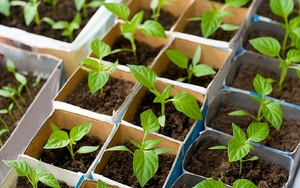 5 days after planting and more often until complete rooting;
5 days after planting and more often until complete rooting;- Every 10 days before harvest in dry weather, more often;
- After harvest.
During the fruiting period, watering is needed 2 times a week. It is important that the water is not cold at room temperature.
Needs pepper and in periodic feeding... The very first is carried out 2 weeks after transplanting the seedlings, the next one occurs during the flowering period of the pepper and then when the fruits appear.
Of the fertilizers, it is good to introduce organic matter, alternating it with mineral compositions that can be used to process the plant using the foliar method. Potash fertilizers are very useful, but they must be used with care so as not to overfeed the plant.
Liquid organic compounds are also effective, but fresh manure is not suitable for feeding. It can provoke the fall of flowers on the pepper. From organic compounds, it is better to use humus, compost. They are brought in in a bucket per 1 sq. m.
Foliar dressing with growth stimulants is done only in warm weather. The preparations are diluted in water and pepper is sprayed on it. These procedures can spend every 2 weeks.
Plant fertilizers are also applicable for the care of peppers. You can prepare such a composition in a 100 liter barrel of water, place 5 kg of dandelion, nettle, starfish, add half a glass of ash and a bucket of mullein there.The composition is insisted for a week. Strain it before use.
What pepper hurts
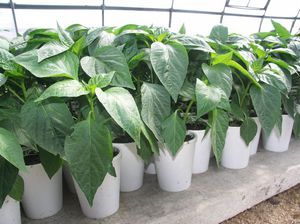 The most common diseases of pepper are white and apical rot, late blight, macrosporiosis, septoria. There are different ways to deal with them. Every 2 weeks it is useful to treat the plant for preventive purposes with antifungal drugs "Trichodermin", "Alirin".
The most common diseases of pepper are white and apical rot, late blight, macrosporiosis, septoria. There are different ways to deal with them. Every 2 weeks it is useful to treat the plant for preventive purposes with antifungal drugs "Trichodermin", "Alirin".
Helps against late blight correct pre-sowing seed treatment... An infusion of onion husks, which is sprayed on plants, is also effective. It is necessary to monitor the moisture content of the soil. Insufficient watering can develop gray rot.
Of the pests of sweet pepper, the most annoying are the scoop, slugs, whitefly, Colorado potato beetle, aphid, bear, spider mite... Against pests, the plant is pollinated with a solution of wood ash. Treating pepper with serum will help well from aphids, after which it is sprinkled with wood ash. Spraying the plants with infusions of tansy, garlic, and wormwood yarrow will help to cope with spider mites. To combat it, celtans, karbofos are also suitable.
Finally
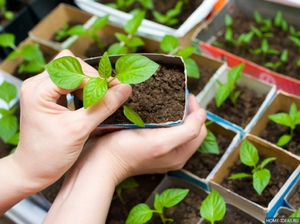 The pepper is harvested by cutting it off as it ripens so that ripe fruits do not interfere with the development of others. Its usually put in boxeswhere it matures.
The pepper is harvested by cutting it off as it ripens so that ripe fruits do not interfere with the development of others. Its usually put in boxeswhere it matures.
When choosing varieties for planting, you need to decide what the pepper is grown for. If you intend to use it fresh, then large-fruited varieties with thick flesh would be a good option. For preservation, varieties with small fruits are also suitable.
As you can see, there is nothing difficult in growing sweet peppers. The main worries fall on the seedling care period. But the harvest received will pay off all the work a hundredfold.
